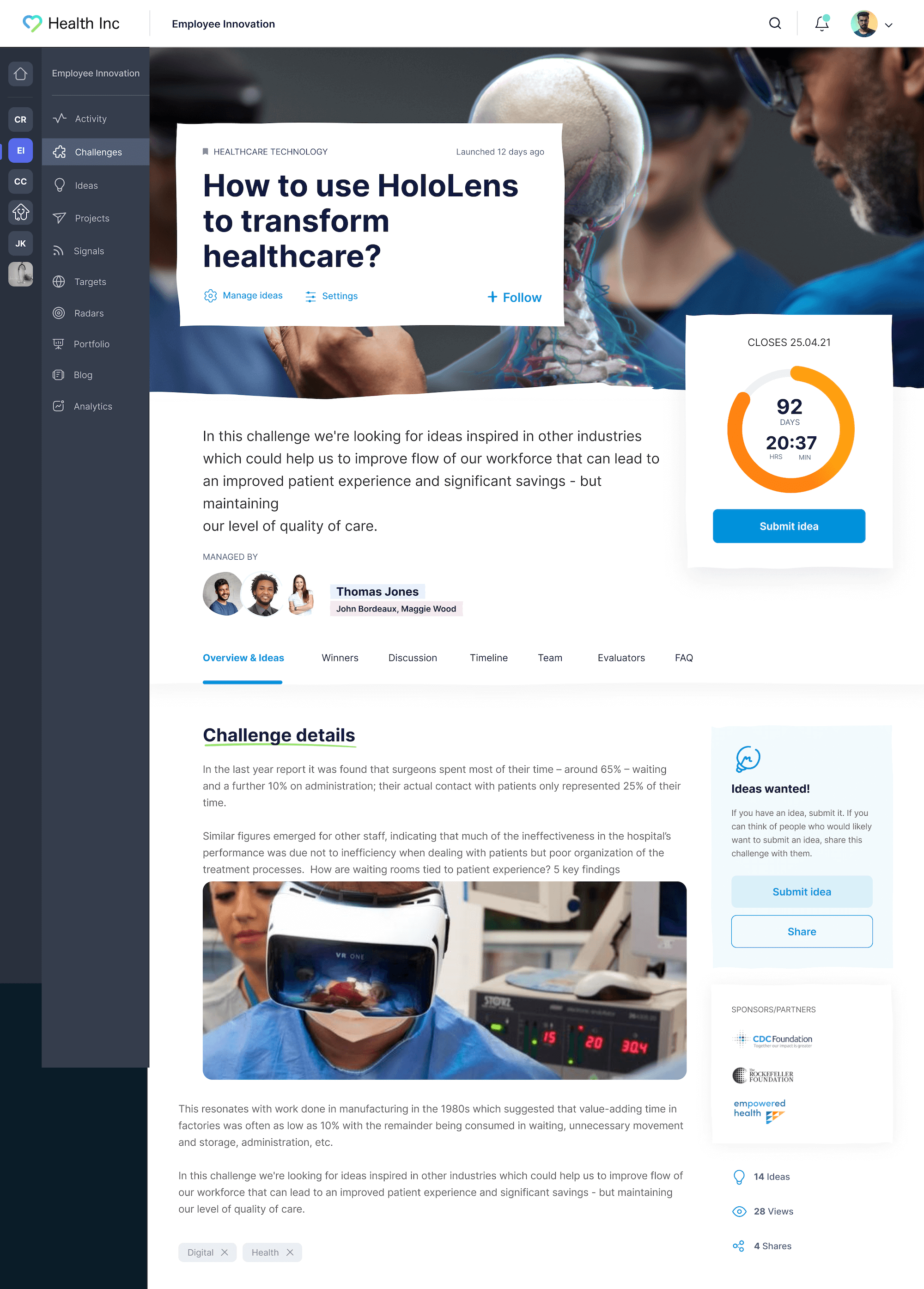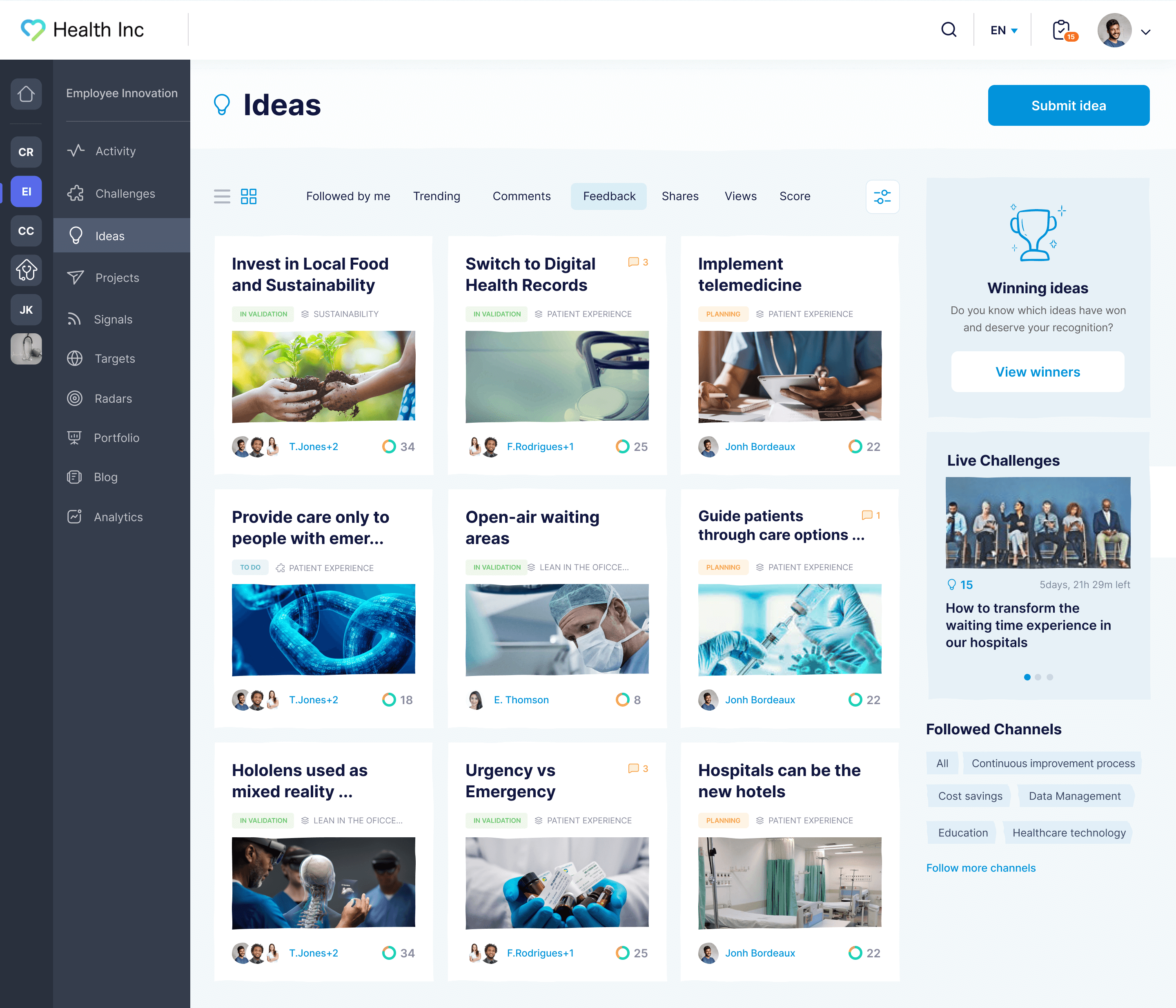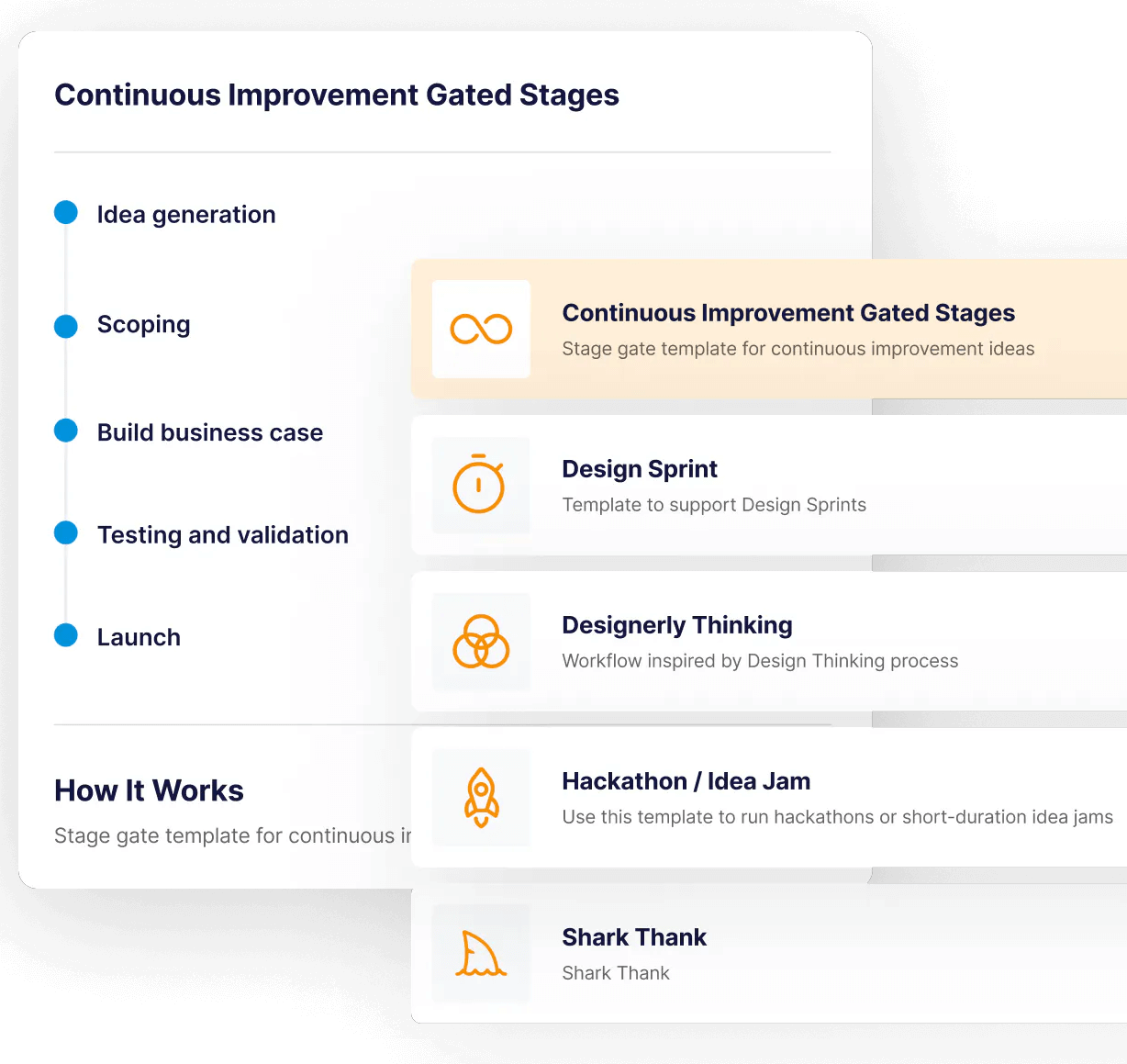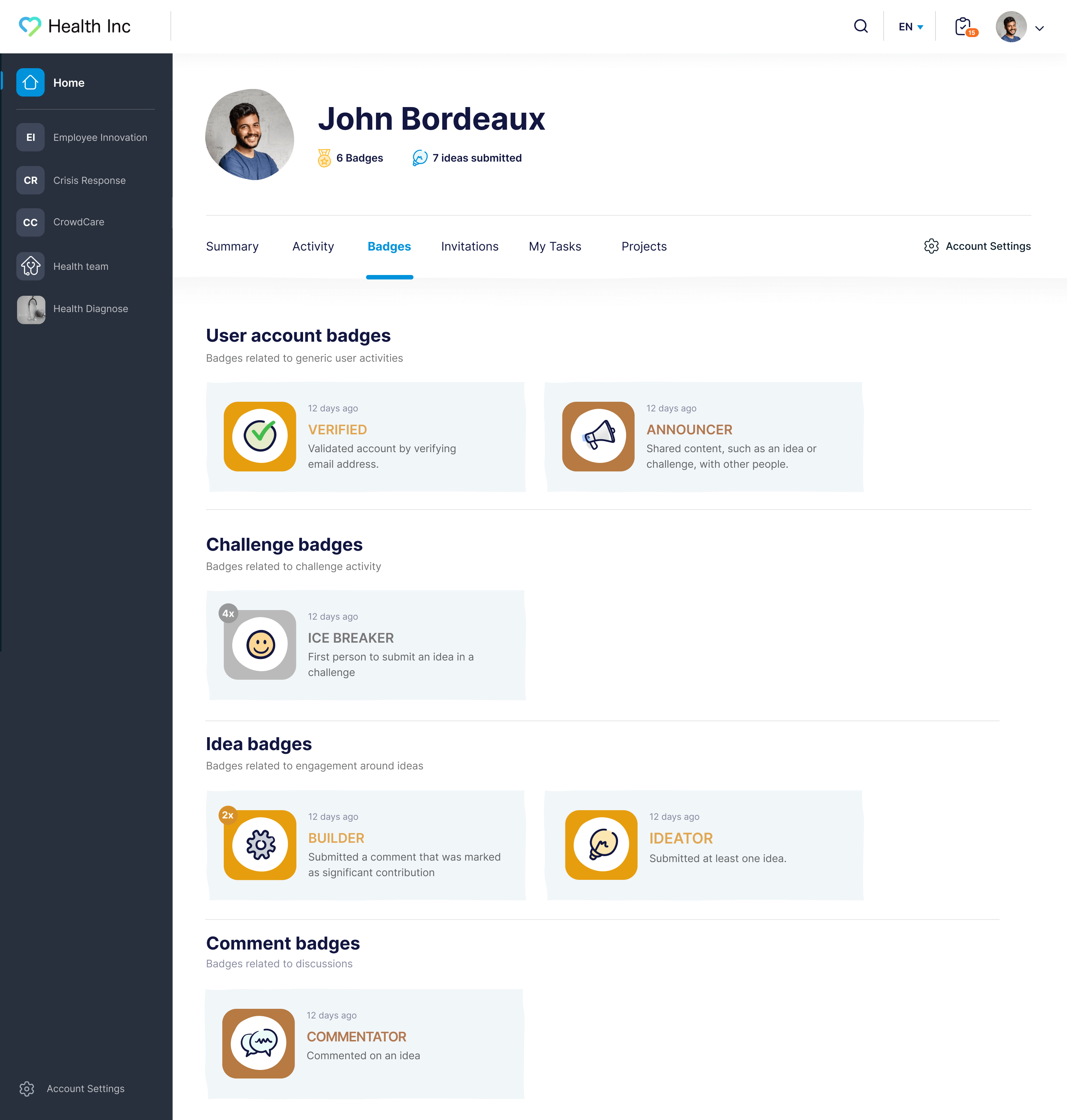A continuous improvement culture is one where employees at all levels of the organization actively seek areas for improvement in products, services, and processes and brainstorm solutions. As a result, companies generate innovative solutions that help them achieve better, cheaper, and faster outcomes.
Here’s the six-step process we’ve used over the last decade to build and sustain continuous improvement cultures across dozens of companies:
Secure leadership commitment: This provides innovation managers with the support and resources needed to establish the processes, tools, training programs, and structures that foster an organizational culture of continuous improvement.
Educate employees on the value of their insights: Frontline employees often underestimate the importance of small improvements, thinking only groundbreaking ideas matter. Educating them on the significance of their contributions helps drive engagement.
Establish a platform for sharing ideas: If done correctly, this crowdsources ideas by leveraging the problem-solving capabilities of the entire workforce. This results in higher-quality ideas than Kaizen Events, Gemba Walks, or other workshops, which usually involve a limited number of employees.
Implement systems for execution and change management: These systems help companies turn ideas into tangible improvements and drive growth, while demonstrating to employees that their contributions are valued.
Reward employees for high-quality contributions: Identifying improvement areas and brainstorming solutions takes time and effort from employees, often at the expense of other responsibilities. Recognizing and rewarding employees keeps them engaged and motivated.
Measure the impact of changes: Tracking and reporting the ROI of continuous improvement efforts to top management reinforces their value and helps secure ongoing funding and resources.
This article reviews each of these steps in more detail, highlighting common mistakes companies make and our recommended solutions.
We'll also cover how we created our innovation management software, InnovationCast, to facilitate the process outlined above.
To learn more about InnovationCast, keep reading or schedule a demo with our team.
1. Secure Leadership Commitment
Top management should allocate the financial resources needed for the tools, processes, training, and structures that will help employees identify improvement areas and develop solutions.
Without top management buy-in, building a thriving continuous improvement culture is nearly impossible.
Innovation managers often struggle to gain leadership support because they seek funding for the entire continuous improvement initiative before demonstrating its ROI potential. Naturally, top management is hesitant to invest in something that hasn't yet delivered results.
A strategy we recommend (and use with our clients) is to prove the value of a continuous improvement culture before asking for full funding. Start by gathering a few improvement ideas with high certainty and strong evidence, and secure a small budget to implement them.
Once those improvements generate results, innovation managers can present them to stakeholders.
That early success signals to leadership that many equally impactful improvement ideas remain undiscovered—if given the proper support. As a result, top management is more likely to provide the resources needed to build a culture of continuous learning and improvement.
Read more: How to Encourage Innovation in the Workplace
2. Educate Employees on the Importance of Their Insights
Employees often hesitate to share ideas because they believe their contributions are insignificant. There's a common misconception that companies only value big, revolutionary ideas from scientists or engineering leads — not incremental improvements.
To change this, companies must educate employees on the value of their insights, no matter how small they seem. This reduces fear of failure, encourages problem-solving, and helps foster a culture of innovation and continuous improvement.
Employees also need training to identify inefficiencies. Without it, they often overlook clear opportunities for improvement. These skills are key to building a continuous improvement mindset.
But most innovation managers don’t have the time to create training materials or run mentorship programs. That’s why we built InnovationCast with resources that support employee learning and promote a culture of continuous improvement across the organization.
InnovationCast’s Educational Resources Train Employees on Continuous Improvement
InnovationCast includes training videos, articles, and other resources that educate employees on the value of their insights and equip them to identify and innovate around improvement areas. These resources were developed over the past decade while helping dozens of companies build continuous learning and improvement cultures.
We’d also like to emphasize the way we deliver these educational resources. Instead of sending employees a 100-page document and a generic hour-long webinar that requires them to dedicate an entire day to learning about continuous improvement, we send regular, bite-sized lessons of information via email, so they can easily digest them while checking their inboxes.
This keeps the continuous improvement initiative at the forefront of employees’ minds and prevents it from becoming a one-time program.
Read more: How to Build an Organization-Wide Employee Innovation Program
3. Establish a Platform for Sharing Ideas and Make It Available to All Employees
Companies collect ideas in various ways. For example, some hold Kaizen Events and Gemba Walks, which are dedicated workshops where employees and managers brainstorm ideas.
While these workshops can be effective and serve as a good starting point, we see the most success with crowdsourcing — specifically, by setting up a digital platform where all employees can contribute ideas. This approach taps into the problem-solving capabilities and diverse perspectives of the entire workforce. Workshops, by contrast, limit ideation to a small group of employees and fail to harness company-wide insights.
That said, the nuances of how you crowdsource ideas matter. Many companies make the mistake of setting up a web page or company email address, asking employees to share ideas, only to forget about it — essentially creating a digital suggestion box. There are a few key problems with this approach:
Ideas aren’t aligned with company priorities: Employees may not know the company’s core focus areas, leading to ideas that don’t align with business goals. When ideas are rejected for this reason, employees become frustrated and stop participating.
Employees can’t see the outcome of their ideas: Without transparency, employees don’t know what happens to their submissions. If they assume their ideas are being ignored, they feel their efforts are wasted, and eventually stop contributing. This hurts morale and makes it difficult to sustain a company culture of continuous improvement.
Companies struggle to collect ideas: While the digital suggestion box may generate excitement early on, this quickly dies down. Without a sustained effort, companies struggle to collect ideas because continuous improvement initiatives don’t stay at the forefront of employees’ attention.
We designed InnovationCast with a feature called Innovation Challenges to solve these issues.
Collect Relevant Ideas with InnovationCast Challenges
Innovation Challenges are time-bound calls for ideas focused on specific priorities, such as eliminating waste, improving customer satisfaction, or enhancing operational excellence.
Each challenge includes detailed information about the priority (e.g., problem statements, customer data, and evaluation criteria) along with a submission link where employees can submit relevant ideas alongside any supporting evidence and data.

Here’s how Innovation Challenges addresses the issues with the suggestion box:
Ideas are relevant to the company’s focus areas: Employees can review the information inside the challenge to understand company priorities, and we update them when those priorities change. As a result, companies collect more relevant ideas.
Employees can track the progress of their ideas: When someone shares an idea, they can see what workflow stage it’s in (e.g., evaluation, validation, or implementation), how it aligns with the evaluation criteria, what experiments are being conducted, and any feedback from evaluators. This reassures employees that their ideas are being taken seriously and developed.
Companies keep priorities at the forefront of employees’ minds: Because Innovation Challenges have set closing dates for idea submissions, employees are encouraged to get involved quickly. This creates a cultural change and helps companies keep sourcing ideas long after the continuous improvement initiative is launched.
After an idea is submitted, it’s featured on the InnovationCast activity feed, making it visible to everyone in the company. Employees are encouraged to collaborate with the original idea author to further develop and refine the concept, fostering a culture of knowledge-sharing and collective problem-solving.

We notify subject matter experts when their expertise is needed to evaluate ideas. They can log into InnovationCast and view all the ideas they’re responsible for evaluating. When ideas are approved, we notify those responsible for prioritization, validation, and implementation.
All resources shared between idea authors, evaluators, and stakeholders are stored within the idea thread, so you don’t have to dig through Slack conversations and Zoom recordings for information.
This makes InnovationCast a unified platform where you can manage hundreds of ideas from submission to implementation.
Read more: 5 Detailed Innovation Challenge Examples & Best Practices
4. Implement Systems for Execution and Change Management
As we discussed in our founding story, a true continuous improvement culture goes beyond asking employees to share ideas. It also involves developing those ideas into working solutions.
However, most companies overemphasize idea collection and lack the systems to move ideas into implementation.
As a result, ideas sit dormant inside a spreadsheet or email inbox. Companies don’t generate business growth from their continuous improvement culture; top management sees this lack of results and cuts funding.
Companies with the most effective continuous improvement cultures have the right systems, frameworks, and structures to transform ideas into actionable improvements — all within a centralized platform that allows them to manage this continuous improvement process at scale.
This way, when someone submits an idea, the post-ideation steps are clear. Everyone knows what’s required of them to move it forward — evaluators know what ideas they need to assess, validation teams know what hypothesis to map out, what experiments to run, and what key performance indicators to track, and stakeholders can easily access the supporting data and leverage it to inform their decision-making.
Bearing this in mind, we designed InnovationCast with workflows to help transform ideas into beneficial solutions.
InnovationCast Workflows Guide Teams Through the Process of Moving Ideas Into Implementation
InnovationCast workflows act as roadmaps for developing ideas into continuous improvements.
Here’s an example of a continuous improvement workflow:

During each workflow stage, we provide clear guidance on the tasks to complete, competencies to leverage, data to consider, hypotheses to map out, and experiments to run. These workflows are built on proven methodologies like Plan-Do-Check-Act (PDCA), 8 Wastes, Six Sigma, PDCA, Design Thinking, 5S, Lean, and more.
Innovation managers can assign tasks within the workflow to specific individuals. For example, a product designer might refine features, while a supply chain manager negotiates better vendor contracts.
When it’s time for someone to complete a task in the workflow, InnovationCast sends a notification. Once completed, the platform automatically alerts the next person in line, keeping improvement projects moving forward.
Read more: How to Develop an Innovation Process to Launch New Ideas
5. Reward Employees for High-Quality Contributions
A proven way to engage employees in innovation efforts is by offering tangible rewards for identifying improvement opportunities. Companies typically do this in three ways:
Financial incentives: Bonuses, salary increases, additional PTO, etc.
Non-financial or career advancement opportunities: Mentorship programs, innovation sabbaticals, leadership training, or access to exclusive networking events.
Commission: Rewards tied to cost-saving initiatives, sales figures, improvement project milestones, or performance-based goals.
While we don’t have strong opinions on the specific types of incentives to use, in our experience, they’re all effective in reinforcing a culture of continuous improvement.
However, a common mistake is rewarding the quantity of ideas rather than the quality of contributions.
For example, companies may reward team members after they submit a certain number of ideas to spark quick employee engagement. This often leads employees to submit generic, low-quality ideas like “We need to be more agile” or “We should go digital” just to meet the quota and collect their reward.
Instead, we suggest rewarding employees based on the quality of their ideas, as this incentivizes them to put more effort into brainstorming and researching. For instance, instead of rewarding employees for every 10 ideas submitted, reward them for every idea considered for implementation.
Reward Employees with InnovationCast’s Badges & Rewards System
InnovationCast features an automated badge and reward system that grants employees pre-defined rewards, set by management, upon completing specific tasks.
For example, team members might receive a cash prize when their idea is implemented or PTO after successfully validating an idea.

6. Measure the Impact Changes Are Having on the Company
Once improvements are implemented, companies should measure their results, compare them to previous iterations, and assess whether the changes are having a positive impact. Reporting these results to top management is crucial for securing ongoing budget and resources.
A common mistake companies make is focusing on vanity metrics, like the number of ideas, votes, employee engagement. While these may generate short-term excitement, they don’t demonstrate ROI. Ultimately, management will want to see tangible results. That’s why we emphasize the importance of reporting actual outcomes as soon as possible.
Read more: How to Measure Innovation: Essential KPIs & Best Practices
Measure the Impact of Continuous Improvements with InnovationCast’s Portfolio Management & Reporting Dashboard
InnovationCast allows companies to track the impact of continuous improvements with customizable reporting dashboards, or by integrating with data visualization tools like Microsoft Power BI and Tableau.
During onboarding, our team helps set up and tailor dashboards to align with your innovation process and the specific types of innovations you plan to launch.
Building a Culture of Continuous Improvement with InnovationCast
InnovationCast has helped companies like DHL, Visa, Vodafone, and Novo Nordisk build a continuous improvement culture in just four weeks.
Schedule a call with our team to learn how we can deliver similar results for your organization.

